What is SD-WAN?
The updates in technology can never be sedentary. You have new technologies, data exchange models, and communication platforms rolling out every hour of the day. One of these latest new technologies is a Software-defined wide area network, a data transfer technique that will blow your minds away!
So, let’s go ahead and see what this newly developed and on-the-rise technology holds for us and our future.
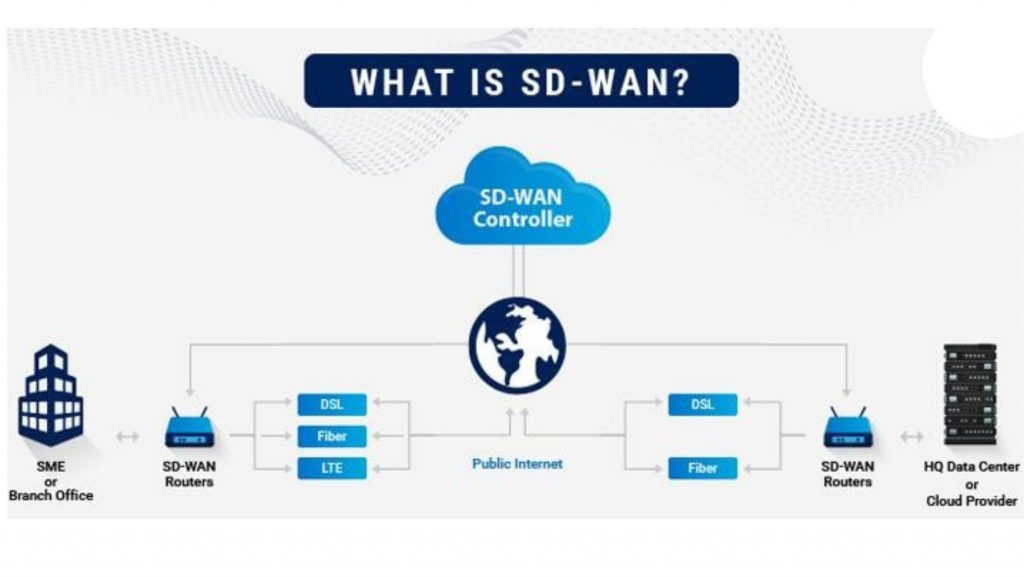
image credit: fieldengineer
What is SDWAN in networking
Software-Defined Wide Area Networking (SD-WAN) is a transformative technology that eases the IT infrastructure of controlling, managing and exchanging data by creating a virtual WAN architecture that securely connects users to their applications. In a more basic sense, SD-WAN is an upcoming technology that creates a WAN overlay network that replaces the generally used branch routers, thus simplifying the WAN infrastructure. It ultimately provides greater control and management, ensures optimum application performance, and provides application-layer control.
What particularly makes SD-WAN stand out from WAN is that, in this data exchange format, software controls everything starting from connectivity to management and providing service. In the generic WAN technology, several hardware devices are installed along with proprietary circuits to route IP services to their intended clients. But, with SD-WAN, all of these devices are eliminated which ultimately saves huge budgetary costs for branch offices and companies.
Now, let’s see, how SD-WAN substitute the usually-used IP or MAC address protocols to send and receive data across huge spatial distance.
How does SD-WAN exchange data?
SD-WAN is an overlay networking scheme that uses tunneling technology to differentiate the physical and logical planes. This means that data is exchanged between SD-WAN devices that are connected by encrypted tunnel monitors. So, when traffic flows to an SD-WAN appliance, it is classified by application and prioritized based on centrally-managed policies so it can be sent out over the best available network link. This means that SD-WAN is transforming the networking wave from the “router-centric” approach to the “application-centric” way.
Moreover, along with using a better traffic routing approach, SD-WAN also eliminates the use of firewalls as it is programmed in such a way that it automatically offers all-required services including security.
But, if you still have some confusion left as to how WAN and SD WAN are different, let’s look at some differences between them.
Differences between WAN and SD WAN
| WAN | SD-WAN |
| Uses an IP address protocol. | Uses tunneling technology to exchange data. |
| relies on the conventional approach. | software-defined approach. |
| the configuration process is very time-consuming. | Regarding infrastructure, the arrangement, configuration, and management processes are swift. |
| Complex procedures concerning infrastructure arrangement, configuration, and management. | reduces complexity to a large extent. |
| Does not integrate with security features. | Smoothly integrates with security features such as SWG, WAN Optimization, and Firewall. |
| does not offer flexibility in WAN management. | offers flexibility in WAN management. |
| heavily depends on the availability of skilled resources. | configuration does not need any human intervention. |
| a very expensive option when you seek high-speed connectivity. | cost-effectiveness and high-speed connectivity |
| low performance when connecting with cloud-based applications | high performance because it directly connects with cloud-based applications. |
These are the key differences between SDWAN and WAN. It is notable from these distinctions that SD-WAN specifically solves most of the challenges that WAN users face; thus, it has become a popular choice in the current networking industry.
However, if you are still not convinced and doubt the endless possibilities that Software defined Wide area Network provides you, let’s look at some of the advantages of this data traffic exchange model.
Advantages of SD-WAN
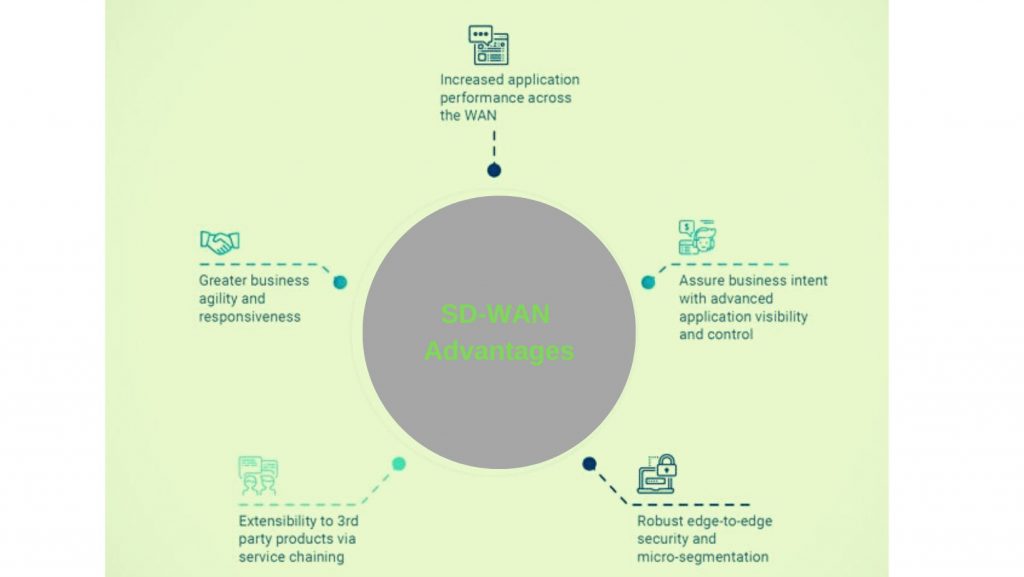
Following are the top advantages of using Software defined WAN for your company and branch offices and the limitless benefits it can provide you:
- BOOSTS SECURITY: SD-WAN solutions that provide a wide range of integrated security features, such as NGFW, IPS, encryption, AV, and sandboxing capabilities are a great advantage as they enhance your consumer experience by providing you highest form of security and also ensuring that you go through least amount of data loss, downtime, regulatory violations, etc.
- ENHANCES CLOUD USAGE: SD-WAN enables direct cloud access at the remote branch, thereby eliminating backhauling traffic. It also improves cloud application performance by prioritizing business-critical applications and enabling branches to directly communicate to the Internet.
- INCREASED AGILITY: Apart from all the other benefits, SD-WAN further provides and ensures that enterprises with multiple branches can connect in an efficient and streamlined manner that satisfies this desire for immediacy.
- SIMPLIFIED MANAGEMENT: Lastly and most importantly, what truly fascinates everyone towards SD-WAN is the simplified management of data that it provides its users. SD-WAN simplifies everything from a management perspective and makes connectivity easier for everyone involved. And with fewer issues comes greater reliability.
However, all these pros do not take away the light from the disadvantages that SD-WAN brings to us. After all, every technology has its ups and downs, right?
Disadvantages of SD-WAN
- First and foremost, it’s hard to ignore the fact that Software defined WAN opens enterprises up to a bigger attack surface as each branch has a physical connection to the internet and along with each other rather than the generic MPLS connection that routes traffic to HQ
- Since SD-WAN eliminates routers and uses specifically dedicated devices, this means that enterprises must retool their approach to security and data exchange, which can be costly and disruptive on the front end in the initial investment round.
- Lastly, since all the devices in the network are connected to the software and the Internet in real time, there is a greater need for encryption of internally exchanged data as it continuously passes across a public network.
And this was our beginner’s guide to SD-WAN in which we discussed everything from its introduction to its distinctions, advantages, and disadvantages. We hope that it cleared your doubts and opened you up to some new and fun updated networking technologies and protocols!
See also: What is 5G technology?- Difference between 5G and 4G ; 5G Vs 4G
Let us know what you think about SDWAN advantages in the comment section below!
If you like this post subscribe our YouTube Channel for IoT video Tutorials.
References





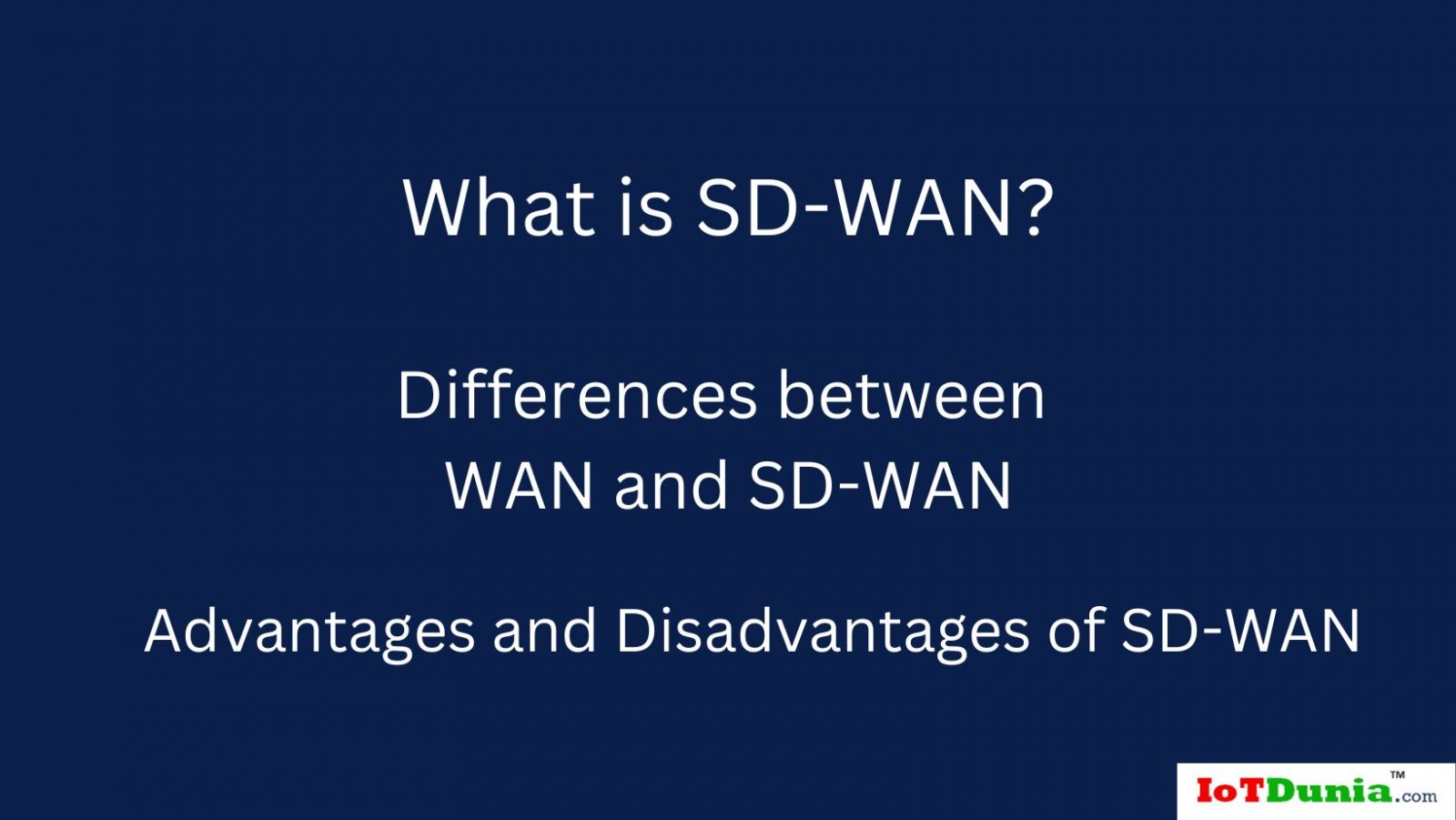

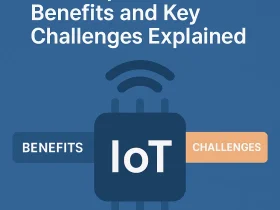
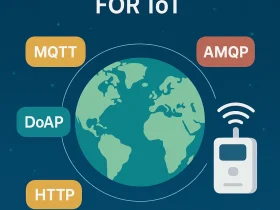

Leave a Review